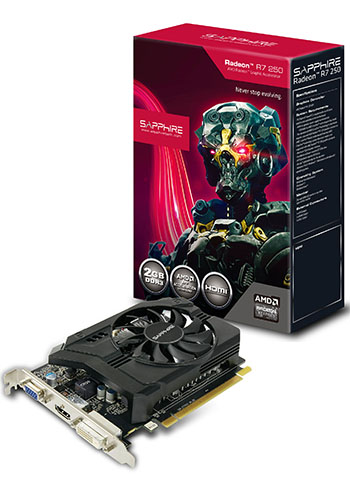Conclusion

You don't need to spend an awful lot of money to play some of the latest games at a full-HD (1,920x1,080) resolution. Knock down the settings to medium and a £60 card, such as a Radeon R7 250, can be deemed good enough for an acceptable experience.
AMD has made meaningful progress with the quality of its integrated graphics, so much so that the latest Radeon R7 IGP contained within the Kaveri-based A10-7850K APU is roughly on a par with a DDR3-equipped version of the R7 250 card from Sapphire.
Both use the GCN architecture and can be teamed up for Dual Graphics, where performance jumps by up to 90 per cent, though 50 per cent frame-rate gains are more common. At this early stage, Mantle, AMD's much-hyped API, on these mainstream platforms, doesn't show any meaningful benefits over Direct3D, and we adopt a wait-and-see approach rather than all-out enthusiasm.
The Sapphire Radeon R7 250 is a competent performer that, in this instance, is held back by the DDR3 memory - spend a little extra for a GDDR5 version and performance is sure to rocket.
Serious upheaval has already begun in the mainstream market, however, with AMD introducing the Radeon R7 250X and Nvidia busy at work with its own take on an energy-efficient GPU. Anyone considering updating a system to a discrete graphics card should pay close attention for the next week or so.
The Good
Sapphire card is practically silent
Dual Graphics works well, boosts performance
Acceptable performance at 1080p
The Bad
DDR3 memory holds it back
Single-link DVI is penny-pinching
HEXUS.where2buy
The Sapphire Radeon R7 250 is available to purchase from Scan Computers*.
HEXUS.right2reply
At HEXUS, we invite the companies whose products we test to comment on our articles. If any company representatives for the products reviewed choose to respond, we'll publish their commentary here verbatim.
*UK-based HEXUS community members are eligible for free delivery and priority customer service through the SCAN.care@HEXUS forum.













